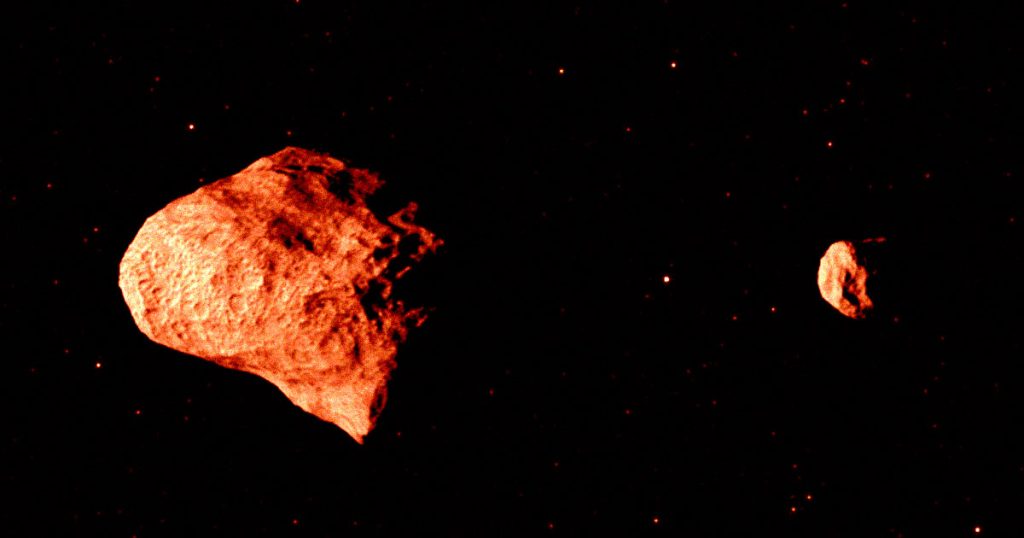
Europe’s Gaia Telescope Spots Hundreds of Hidden, Lurking Moons (Image Credit: futurism-com)
“This discovery shows that there are many asteroid moons out there just waiting to be found.”
Mini Moons
The European Space Agency’s Gaia mission spotted hundreds of potential moons, orbiting around more than 350 previously unknown asteroids lurking within the solar system. These “binary asteroids” — two space rocks orbiting a common center of rotation — could have considerable implications for our understanding of how the solar system initially formed and evolved over billions of years.
As detailed in a new study published in the journal Astronomy & Astrophysics, the researchers say they’ve found binary candidates orbiting 352 newly discovered asteroids.
“Binary asteroids are difficult to find as they are mostly so small and far away from us,” said lead author and Observatoire de la Côte d’Azur postdoctoral researcher Luana Liberato in a statement. “Despite us expecting just under one-sixth of asteroids to have a companion, so far we have only found 500 of the million known asteroids to be in binary systems.”
“But this discovery shows that there are many asteroid moons out there just waiting to be found,” she added.
Space Collision
Scientists believe that asteroids are made up of the material that once formed the Sun and planets in our solar system over 4.6 billion years ago, a highly valuable glimpse into our distant past. Binary asteroids, in particular, are even more intriguing to scientists, offering up clues about how space rocks interact and collide with each other.
By analyzing data from the ESA’s Gaia space telescope, the researchers observed “wobbles” in the orbits of distant asteroids, suggesting the existence of hundreds of tiny moons circling them. Liberato and her colleagues used data from Gaia’s Data Release 3, published in 2022. An upcoming data dump dubbed Data Release 4 is slated for 2026.
Previous research based on the current data release showed that Gaia could pinpoint the precise position and motions of over 150,000 asteroids.
Excitingly, we could soon get an up-and-close look at a binary asteroid. Later this year, the ESA is hoping to launch its Hera mission to visit Didymos and its moon Dimorphos, the space rock NASA smashed its Double Asteroid Redirection Test (DART) spacecraft into in 2022.
More on asteroids: Scientists Surprised to Find Distant Asteroid Is Very Soggy





